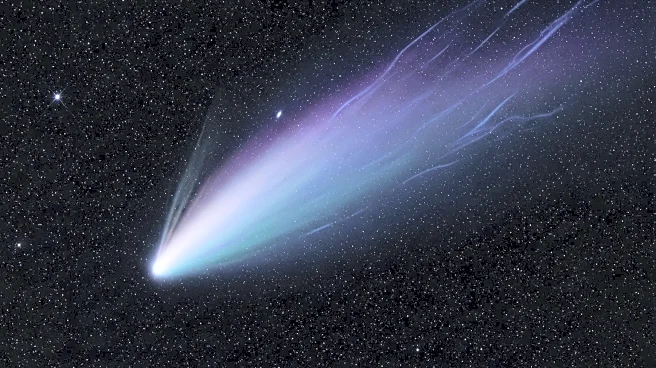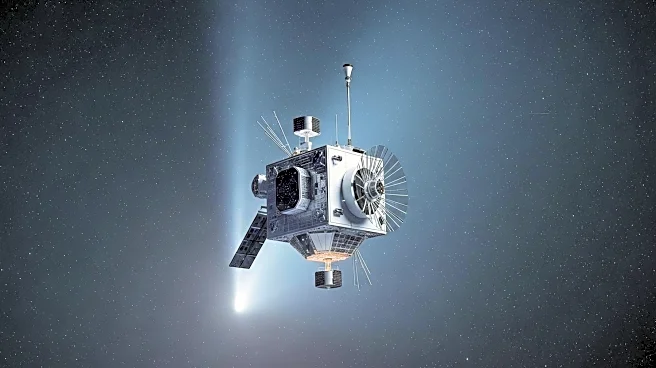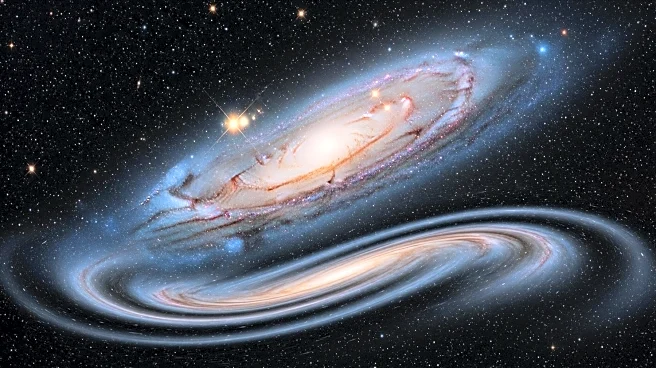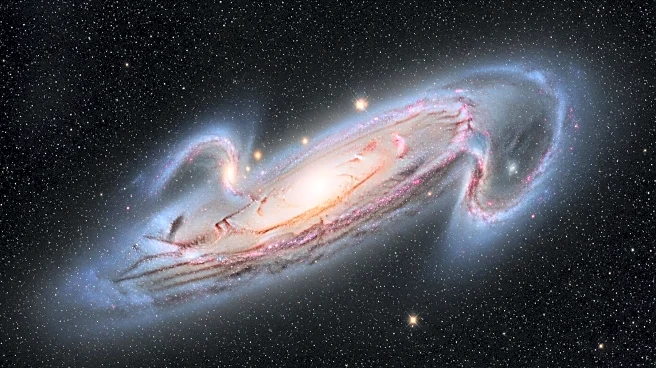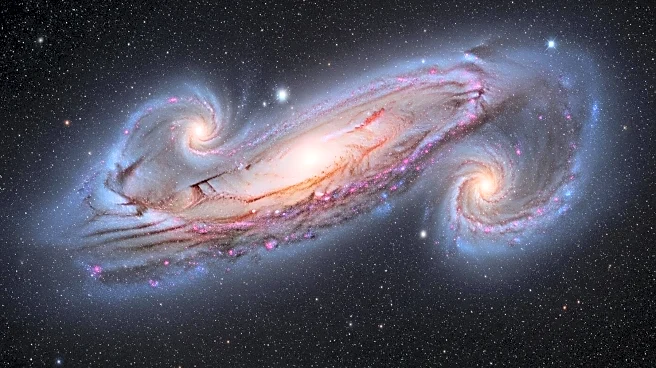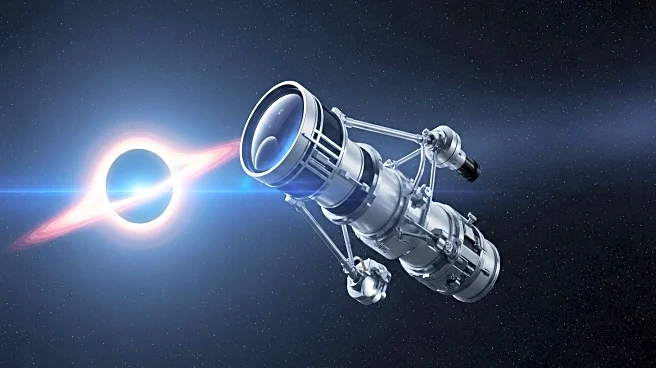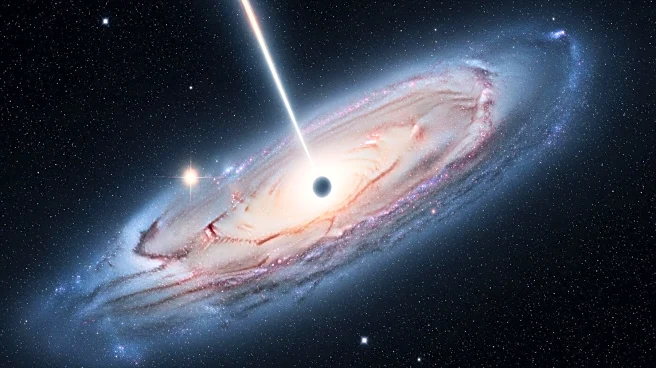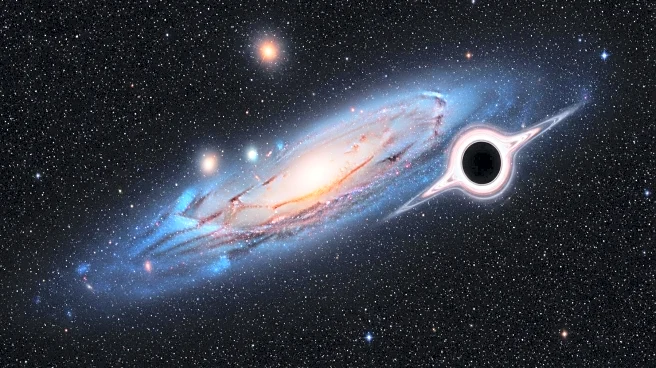What is the story about?
What's Happening?
Astronomers have identified a vast wave pattern in the outer disk of the Milky Way, stretching over tens of thousands of light-years. This discovery was made using data from the European Space Agency's Gaia space telescope, led by a team including Eloisa Poggio from Italy's Istituto Nazionale di Astrofisica. The wave appears to ripple away from the galaxy's center, adding complexity to the Milky Way's known rotation, warp, and wobble. The wave pattern involves the vertical positions and motions of stars, sweeping across a significant portion of the galaxy's outer disk. The research highlights the precision of Gaia, which allows for detailed mapping of the galaxy's structure.
Why It's Important?
The discovery of this wave pattern is significant as it provides new insights into the dynamic nature of the Milky Way. Understanding these waves can help astronomers learn more about the galaxy's history and structure, including past interactions with other galaxies. The wave's behavior suggests a possible connection to the galaxy's gas disk, which could influence star formation. This research could lead to a better understanding of how galaxies evolve and interact over time, offering clues about the forces shaping our galaxy.
What's Next?
Future data releases from Gaia are expected to provide even more precise measurements of star positions and motions, which will help refine the wave maps and improve understanding of the Milky Way's structure. This ongoing research could reveal more about the origins of the wave and its implications for the galaxy's evolution. Scientists are particularly interested in determining whether the wave is related to past galactic encounters or other cosmic events.
AI Generated Content
Do you find this article useful?


